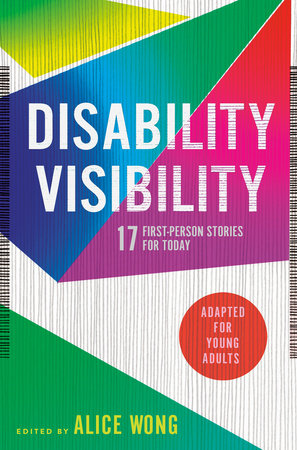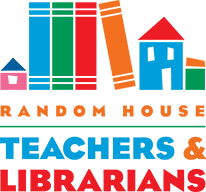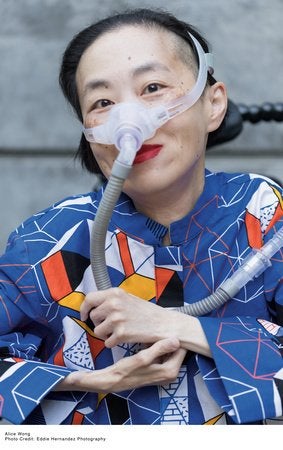Q&A with Alice Wong, editor of DISABILITY VISIBILITY

Disability Visibility (Adapted for Young Adults) By Edited by Alice Wong
Disabled young people will be proud to see themselves reflected in this hopeful, compelling, and insightful essay collection, adapted for young adults from the critically acclaimed adult book, Disability Visibility: First Person Stories from the Twenty-First Century. The seventeen eye-opening essays in Disability Visibility, all written by disabled people, offer keen insight into the complex and rich disability experience, examining life’s ableism and inequality, its challenges and losses, and celebrating its wisdom, passion, and joy.
The accounts in this collection ask readers to think about disabled people not as individuals who need to be “fixed,” but as members of a community with its own history, culture, and movements. They offer diverse perspectives that speak to past, present, and future generations. It is essential reading for all.
Enjoy this Q&A with anthology editor Alice Wong!
In addition to writing Disability Visibility, you are the founder of the Disability Visibility Project. What prompted you to start the online community, and how can young readers interact with it to find community of their own?
I originally started the Disability Visibility Project (DVP) in 2014 as an oral history campaign encouraging disabled people across the country to record their stories in the lead-up to the twenty-fifth anniversary of the Americans with Disabilities Act in 2015. I was tired of not seeing disability history taught in school, with the exception of the same small handful of famous disabled people like Helen Keller and FDR. The DVP grew quickly into an online community with a podcast, guest essays, and more. There’s a lot of content people can find on my website or by following me on Instagram and Twitter. The DVP is my attempt to create work by us and for us.
What advice do you have for young people looking to write or start their own entrepreneurial projects?
Knowing what’s out there is a start, and seeing other projects that are good examples of what to do and what not to do is helpful, too. Before you launch a name or hashtag, check if it’s already in use by others. If you’re working on a project, figure out how much time you have, what budget you’ll need, how you can make it sustainable, and what will set you apart. Are you filling a need? Will this give you joy? Is it a good use of your time? If you are interested in writing, start with what you care about. Journal writing can help you develop your voice and a place for your thoughts. It’s private so you don’t have to edit; you can just write without any rules. I also try to learn from my past work and try to challenge myself. I’m still figuring stuff out and cringe at some of my essays from a few years ago. So maybe that’s a sign of growth?
Can you talk about the process of selecting essays to be included in Disability Visibility? How did you find authors of the essays, and how did you decide what to keep in the young adult adaptation?
I bookmark a lot of great articles, essays, and websites for my own use. When I wrote the book proposal for the adult version of Disability Visibility, I had a spreadsheet of over fifty essays I wanted to include. During the manuscript phase, my editor, Catherine Tung, and I narrowed it down to thirty-seven because each was singular and covered an issue or perspective that is important to me. I knew most of the authors already from social media or as acquaintances and friends. It helped that I spent many years developing these relationships so people knew and trusted me. Beverly Horowitz and Rebecca Gudelis of Delacorte Press reached out to me and suggested the seventeen pieces that are in the young reader version because of length and content.
Are there any stories of disability you feel are yet to be told and would have liked to include?
There are always a ton more stories to be told! Universes upon universes! I want to hear from young disabled people, disabled artists, activists, and people from all walks of life. I want to see more work by disabled queer people, disabled gender-nonconforming people, and Black, Brown, and Indigenous disabled people. Publishing has barely scratched the surface when it comes to the richness and diversity of disabled lives.
As you were editing the essays, what were some things that really struck you?
It is a great responsibility to be an editor, and my role was to give the authors another perspective, to ask questions, and to make suggestions. I took a lot of care with their words. The contributions excited me because they were all very different, yet all were personal, political, and powerful. I appreciated the contributors’ participation in this anthology and the efforts they made in the editing process, which can be time-consuming and difficult. (I say this as a writer who understands the pain.) There wouldn’t be an anthology without them. I continue to love the essay form, since the contributors were able to express themselves clearly and concisely. Longform works seem more daunting to me!
Can you share some memories you have of being in school?
I am “an old,” as the kids say. I attended grade school in Indianapolis in the 1980s and loved reading, writing, social studies, art, and going to the library. One of my favorite places was the Nora Branch of the Indianapolis Public Library, where I attended summer reading programs. Good times. Later, I became a volunteer and got to listen to kids talk about books at the Carmel Public Library in Carmel, Indiana, when I was in high school. By the way, support your local library and volunteer or donate if you can!
Do you have hopes for how this book will be received and used in schools and libraries now?
With any anthology, I hope there is something for everyone, and the length of the essays make them ideal for short assignments and readings. It would be awesome if teachers used this in English, cultural studies, or history classes. I’d love to see libraries or student groups form book clubs or use it as a springboard to encourage students, especially disabled students, to tell their stories. There’s also a free plain-language summary and discussion guide, both by disabled writers, available as resources for teachers, students, and librarians.
Time for a fun rapid-fire round!
Name a book or books you won’t ever part with.
Let Papa Sleep by Crosby Bonsall
What’s your favorite food or snack?
Coffee and pie (or cookies, or doughnuts)
Who is a person/group doing amazing work that you admire?
I think Sandy Ho, the founder and co-organizer of the Disability & Intersectionality Summit, is pretty awesome! Full disclosure: I am on their steering committee.
Name something that brings you joy.
Group texts with friends, fancy snacks, and Netflix
What’s next for you after finishing Disability Visibility?
Thank you for asking! I am about to turn in the manuscript for my memoir, Year of the Tiger, which will be published by Vintage Books in 2022. I have a few other fun projects lined up next year, and if I’m really organized, I’ll start outlining a proposal for another anthology I want to edit.




